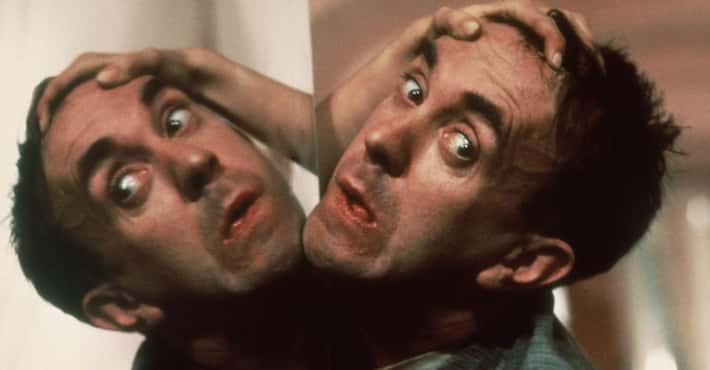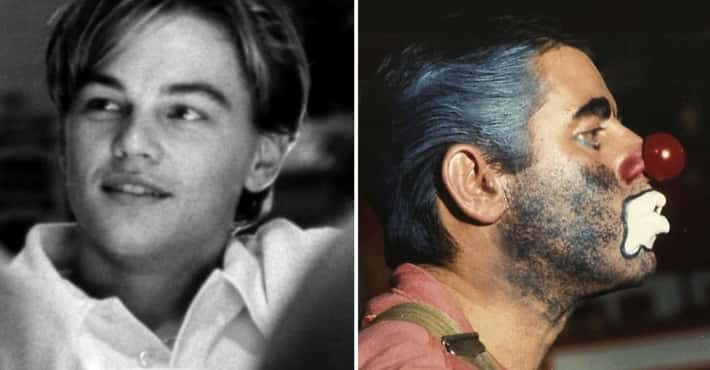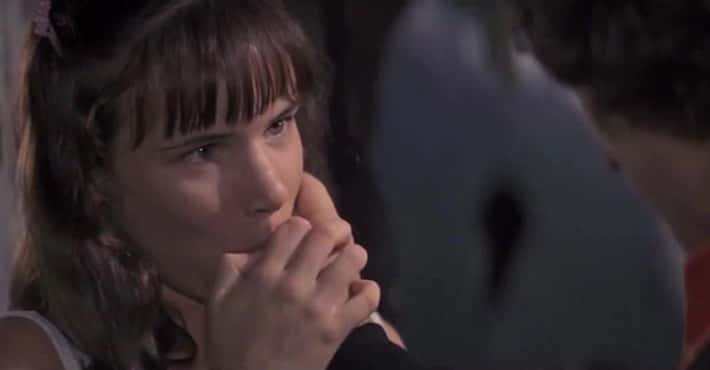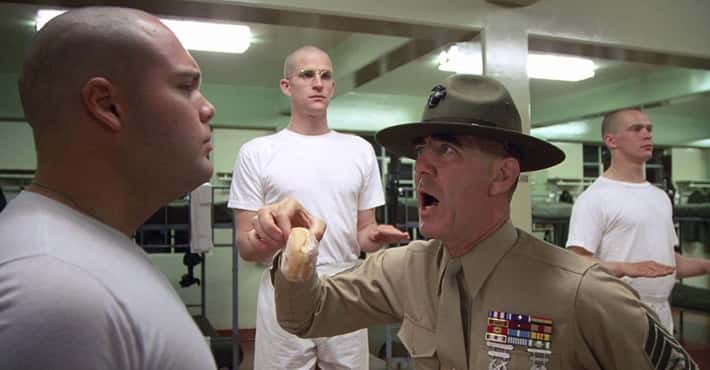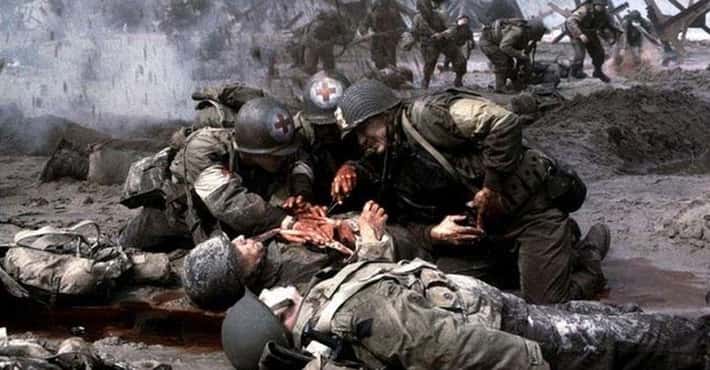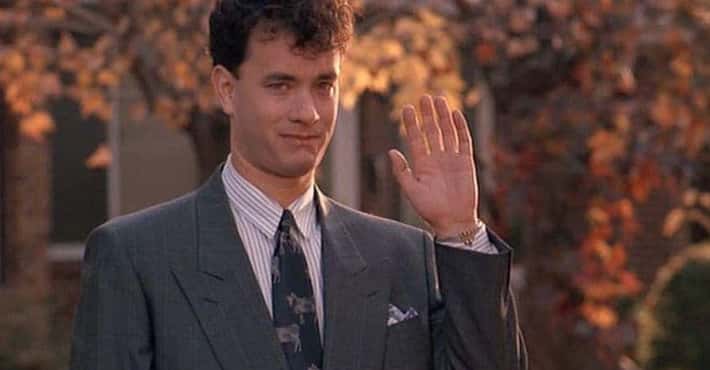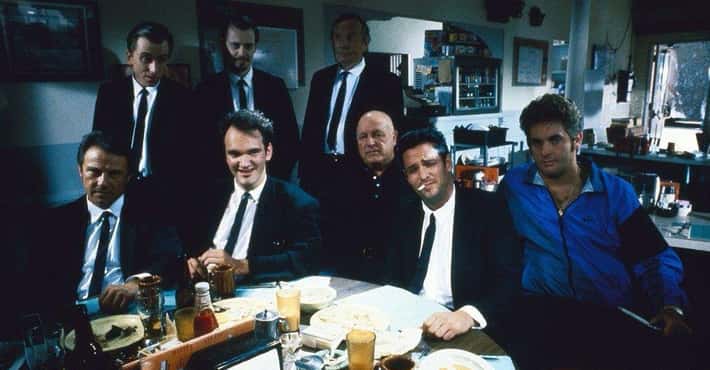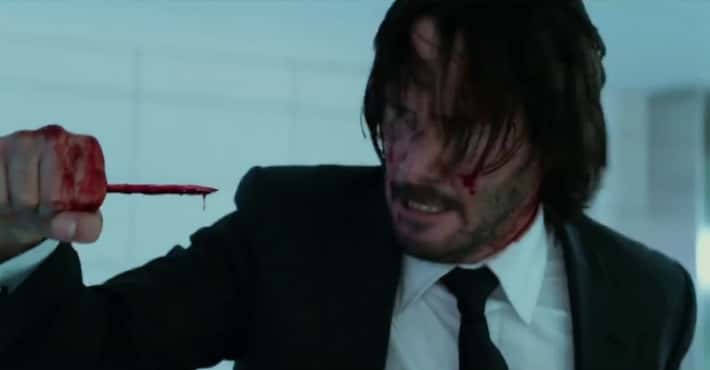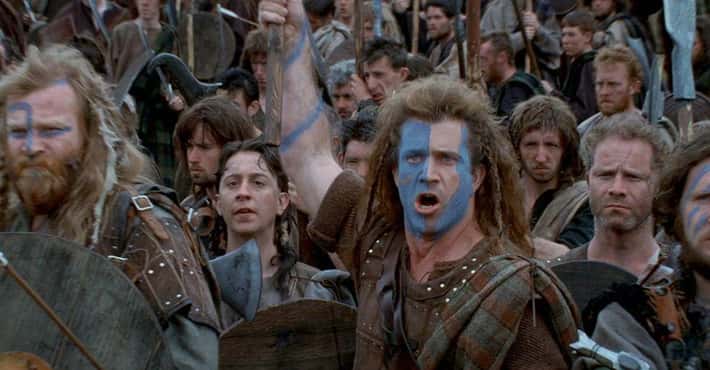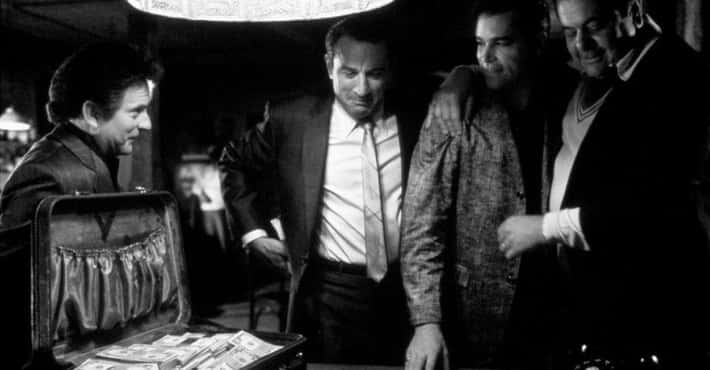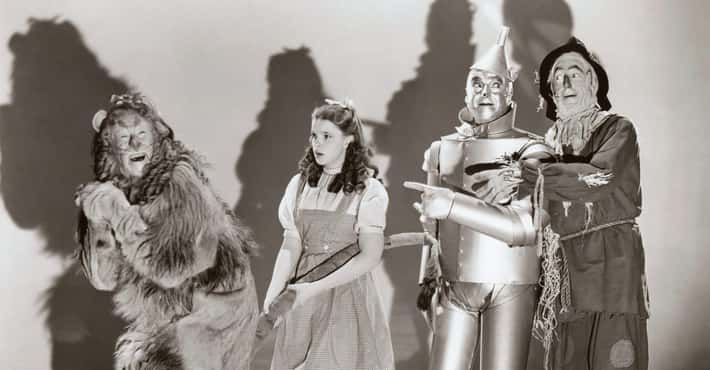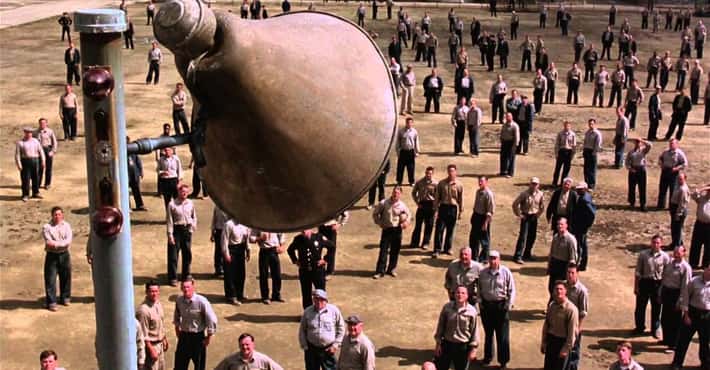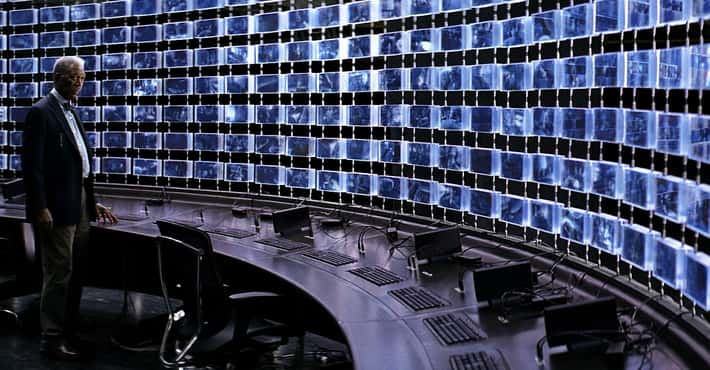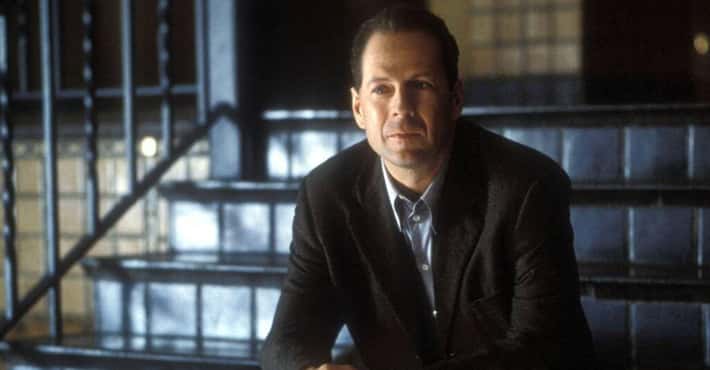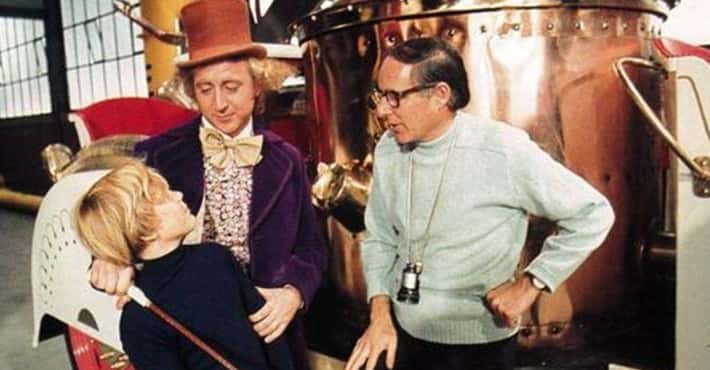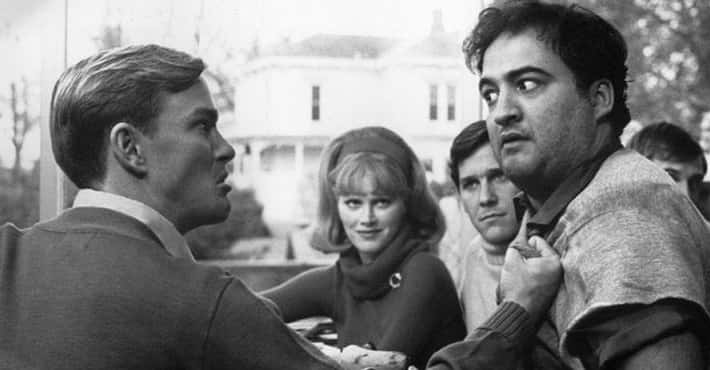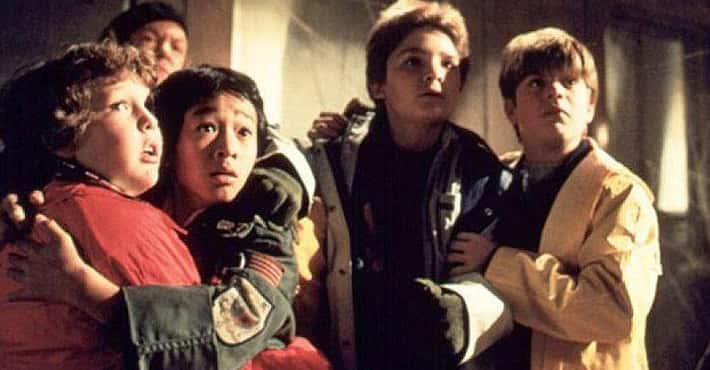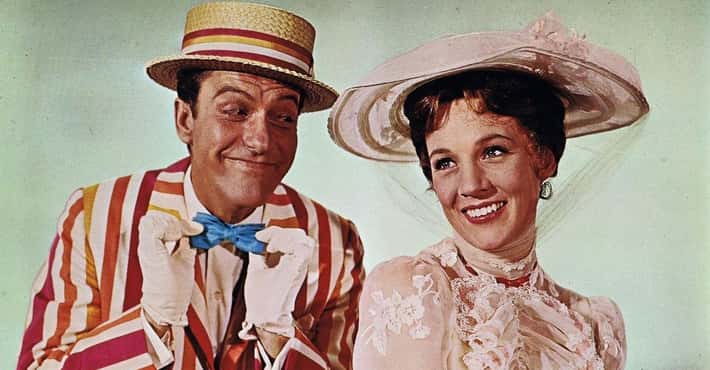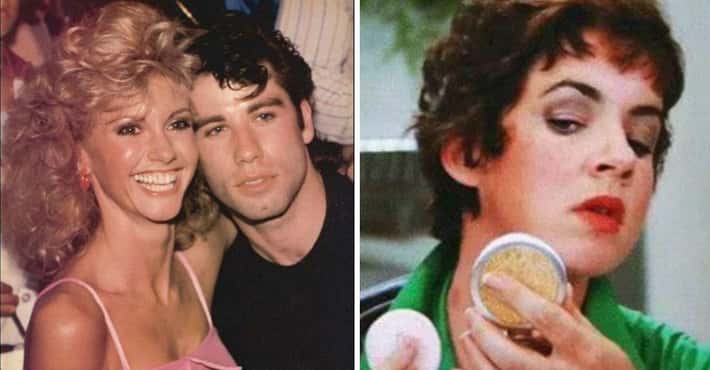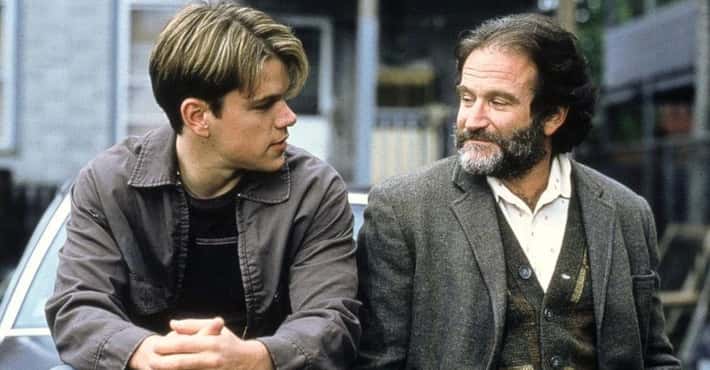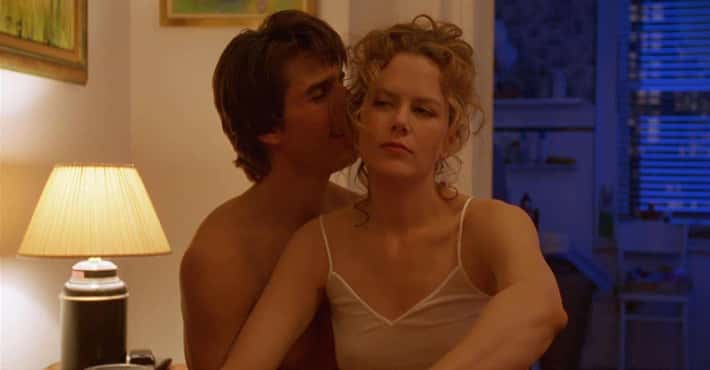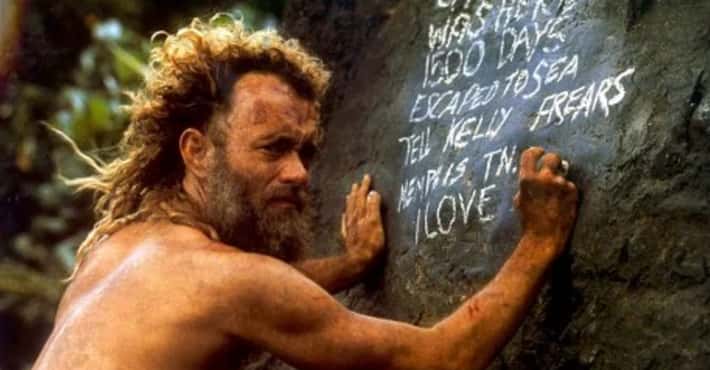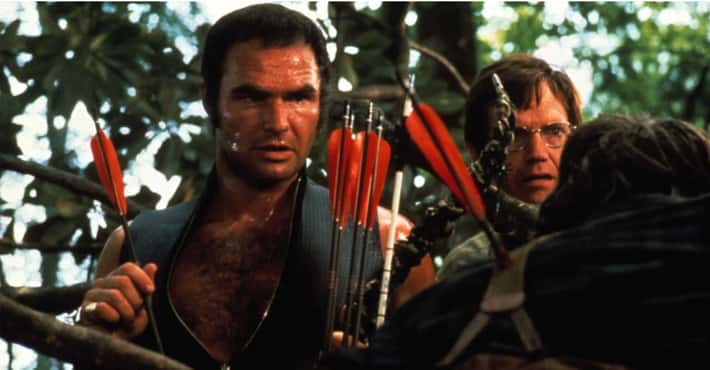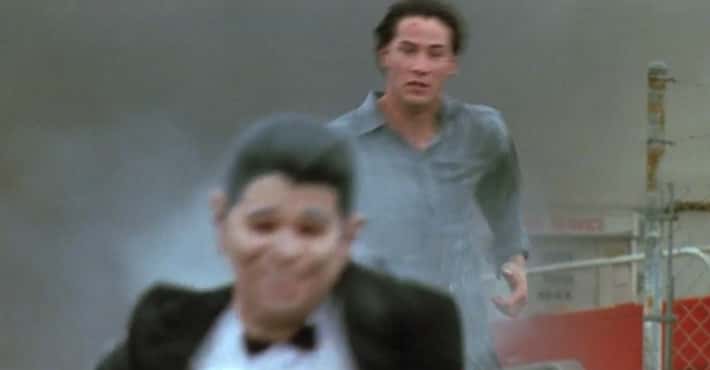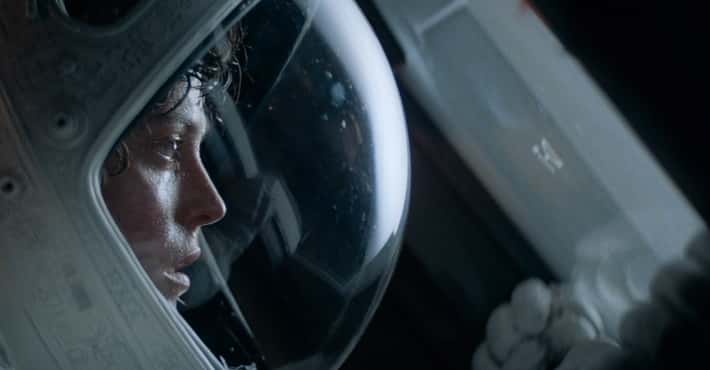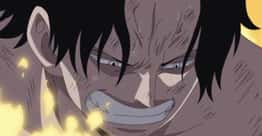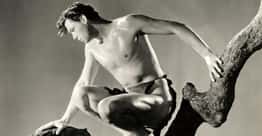Behind-The-Scenes Stories From The Making Of 'Constantine'
Keanu Reeves Met With An Exorcist To Prepare For The Role
Photo: Warner Bros.In the film, Constantine believes that exorcising demons from victims will earn him a Get Out Of Hell Free card from Satan himself. While most actors might watch the quintessential exorcism movie The Exorcist, Reeves met with an actual exorcist for some tips. One of Constantine's tricks which he learns from an unnamed demon slayer is the appropriate way to hold someone with a demon trapped inside of them.
Reeves is no stranger to in-depth preparation for his many movie roles; for example, he participated in months of training and exercise to gain the proper physique for the John Wick trilogy. He also learned to surf for Point Break.
Director Francis Lawrence Was Hoisted Up On Cables To Film An Action Scene From Above
Photo: Warner Bros.Most directors might use a crane to film an action shot from above, but Lawrence insisted on being lifted by a harness and cables to capture a particular scene for the film. He reasoned that the scope of the fight between Constantine and a bunch of demons required an eagle-eyed perspective.
The finished scene became a water-filled ballet of screaming demons and a determined Constantine sending them back to Hell. Lawrence carried his attention to detail into his future projects, including the final three films in The Hunger Games franchise.
One Scene With Rachel Weisz Involved Reeves Actually Holding Her Under Water
Photo: Warner Bros.In one scene, Constantine holds Angela Dodson (Rachel Weisz) under the water in a bathtub to make her see hell. In interviews, Weisz admitted filming the scene was frightening for her since Reeves actually held her underwater. Holding her throat to immerse her in the tub, Reeves relied on taps from Weisz to alert him when she needed air. The scene required a lot of thrashing, however, and the cast and crew were nervous about her safety.
Weisz wasn't the only one performing her own stunts, as Reeves, Shia LaBeouf, and Gavin Rossdale did much of their own work as well. Reeves, an old pro in stunt work, flew through the air after being punched by a demon in one scene. Rossdale, playing the demon Balthazar, filmed his own fight scene in full makeup and a suit. LeBeouf performed a stunt where the crew slingshot him into a foam wall, bruising his face.
Reeves Didn’t Feel He Truly Understood His Character Until He Found The Right Coat
Photo: Warner Bros.Reeves admitted in several interviews that he was not familiar with John Constantine until the 2005 film. While preparing for the role, he read some of the comic books to get a handle on the essence of the character. It wasn't until costuming, however, that Reeves really felt connected to Constantine, especially when it came to picking out the right coat.
After getting to know the character, Reeves walked into his fitting and worked his way through racks of clothing to create Constantine's look. He tried hats, pants, shoes, and other ordinary items, but the coat is what really clarified his role. He used the coat to find the demon hunter's movement while on set the first day.
Shia LaBeouf Felt Like He Was In A Terrifying Documentary Because Of His Religious Background
Photo: Warner Bros.At only 18 years old during filming, Shia LaBeouf still had memories of his bar mitzvah and religious upbringing while on set. Raised in the Jewish faith, the actor found himself drawn to the sidekick character of Chas because the script was grounded in reality while still embracing the supernatural aspects that characterize a Constantine story. When asked about the presentation of heaven and hell in the film, LaBeouf shared that it felt like a documentary based on what he learned from his faith.
Characterizing it as a "nightmare," LaBeouf elaborated that the film itself makes viewers think and feel in certain ways that can be uncomfortable when assessing one's mortality and the existence of the afterlife. Costar Djimon Hounsou also related to the content on a spiritual level, pointing to his childhood in West Africa where the ideas of heaven and hell are intertwined with rituals and cultish fervor.
Peter Stormare’s Satan Was Modeled After Fagin From ‘Oliver Twist’
Photo: Warner Bros.Dozens of actors have portrayed Satan over the years. Al Pacino as a lawyer in The Devil's Advocate freely indulged in vices while presenting a polished mask to the outside world. Tim Curry was a monstrous Devil in appearance and deeds in Legend, and Will Smith appeared as a laid-back, T-shirt-wearing Prince of Darkness in Winter's Tale. Director Francis Lawrence wanted Constantine's adversary to take after Fagin, the villain in Charles Dickens's Oliver Twist who gives orphans shelter in return for committing illicit activities on his behalf.
Peter Stormare plays Satan as a greasy, dirty man with a sheen of misdeeds enveloping his entire character. Walking around in a white suit, Satan makes strange jokes punctuated by an unsettling smile before revealing his true face of lies.
The Director Pitched The Movie To Reeves The Day After He Returned From Making 'The Matrix' Films
Photo: Warner Bros.Reeves received the script for Constantine while finishing up The Matrix and committed to the project based on the story and character journey in the film. When director Francis Lawrence was selected, Reeves, although initially skeptical, became the deciding factor as to whether or not the music video director had what it took to work on a big-budget movie. As soon as Reeves finished filming the Wachowskis' trilogy, he met with Lawrence to learn the director's vision for Constantine.
Once Lawrence showed Reeves a reel of his work, Reeves bought into the director's passion and thoughts for the film.
Reeves’s Physical Instincts Were So Good, The Stunt Coordinator Called Him A 'Godsend'
Photo: Warner Bros.Reeves is no stranger to method role preparation. He entered into months-long training with famed Chinese martial arts master Yuen Woo-ping and read tomes like Simulacra and Simulation, Out of Control: The New Biology of Machines, Social Systems, and the Economic World, and papers on evolutionary psychology for The Matrix films. Constantine starting filming immediately after The Matrix wrapped, and Reeves maintained his sense of discipline on set.
In response to Reeves dedication to his roles, stunt coordinator RA Rondell referred to the actor as a "Godsend" saying, "He's somebody I knew was going to participate continuously. He's a very quick study. You can tell him something, do a rough rehearsal of what it is, and he can pick it up that quickly."
The Producers Sought Out A Young Director To Keep The Constantine Story 'Young And Hip'
Photo: Warner Bros.Constantine was director Francis Lawrence's first full-length feature as his previous work included only music videos. Reeves was initially hesitant to sign onto such a large project with an inexperienced director, but the studio wanted a "young, hip" director to match the same qualities they felt John Constantine exhibited. Reeves changed his mind about Lawrence after meeting him. He even complimented Lawrence in press interviews. Several other actors on the project also lauded the director's talents.
In an interview during a press junket, Weisz spoke of Lawrence's camaraderie with the actors and his ability to shift from small scope music videos into something as large as a film. Costars LeBeouf and Hounsou also praised Lawrence for being flexible with the actor's interpretations of their characters. Lawrence went on to direct multiple movies, including three films in The Hunger Games franchise.
Screenwriter Frank Cappello Wanted A Personal Conflict For Constantine Rather Than A Save-The-World Narrative
Photo: Warner Bros.Most comic book adaptations have one thing in common: the fate of the world - or millions of people - is at stake. Constantine is more of an antihero and he is saddled with the strange gift of seeing demons and angels. He is intricately involved in their quest to collect human souls for their respective masters. Constantine's motives are selfish as he is trying to save himself from hell. In other words, he's not exorcising demons from innocent victims because it's the right thing to do. Screenwriter Frank Cappello took his inspiration for the script from the Hellblazer run called Dangerous Habits, and in doing so, made Constantine's adventure more personal.
Constantine took his own life as a child, spent two minutes in hell, and then returned to mortality to use his power among the people. The catch is that when he meets his demise a second time, Satan gets to take him to hell, where he intends to rip him to shreds. After everything he's seen, his choice to smoke like a freight train is the number one threat on his life, allowing cancer to be the enemy poised to send him to the underworld. Instead of a city facing extinction, he faces his own demise, infusing the story with a different kind of journey.
Producer Lauren Shuler Donner Sought To Make A 'Classy, Classic' Horror Film Like ‘The Exorcist’
Photo: Warner Bros.Kevin Broadman introduced the idea of a Constantine movie to producer Lauren Shuler Donner, who liked the idea of bringing the supernatural comic to the big screen. She described wanting it to be classic and classy like the horror institution The Exorcist, which has been terrifying viewers for over 50 years. Like The Exorcist, Donner believed the Hellblazer comics included incredible stories that would translate well on the screen while standing the test of time.
Donner is no stranger to classic filmmaking, and she went on to bring Marvel's X-Men to the big screen. Over the course of her career, she has produced seven X-Men movies and two Deadpool features. Although Constantine didn't hit theaters until 2005, Donner received the property in the late 1990s, preceding the X-Men franchise by a couple of years. It may well be that without Constantine, we would not have the catalog of X-Men movies we do today.
Lawrence Expected Studio Pushback For Requesting Tilda Swinton But Received None
Photo: Warner Bros.While Tilda Swinton is no longer relegated to indie filmmaking, times were different for the actor in the early 2000s. Not yet a member of the Marvel Cinematic Universe or starring alongside George Clooney in 2007's Michael Clayton, Swinton was not a household name. Lawrence wanted someone androgynous to play Gabriel and his first choice was Swinton. Lawrence doubted the actor's interest in the film, but still formulated intricate plans to ensure the studio would allow her to participate.
These plans included casting actors with box office clout, like Reeves, Weisz, and Stormare to "pad out" the movie. Armed with determination, Lawrence suggested Swinton for the part and received immediate support from the studio.
Reeves Denied Rumors From The Cast That He Kept Spiritual Journals During Filming
Photo: Warner Bros.Although other actors insisted Reeves kept a journal filled with his musings on spirituality while filming, he denied any truth to the rumors. According to Reeves:
In the process for me, it's writing things down, thoughts... for working on the role... I wasn't carrying around "The Path of the Peaceful Warrior" in that sense. I think the film speaks for itself in a way, and that's really what I was working on.
Due to Reeves taking roles as Siddhartha in the film Little Buddha, his turn as Christ-like figure Neo in The Matrix films, and acting as one of Satan's children in The Devil's Advocate, journalists enjoyed asking questions about spirituality during the press junkets for Constantine. Reeves dodged inquiries by reiterating his stance on faith as a very "personal and private" thing to him. He did admit that he sees these roles as "hero's journeys" that everyone can relate to outside of religion.















